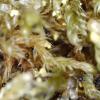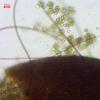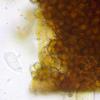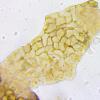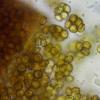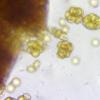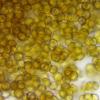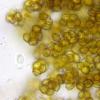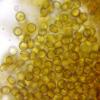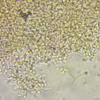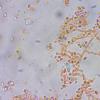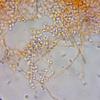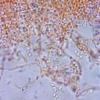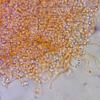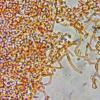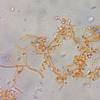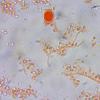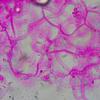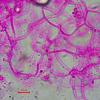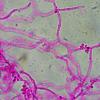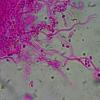
08-11-2025 00:29
 Francois Guay
Francois Guay
I found this species in Quebec, Canada, on herbace

04-11-2025 09:07
Hello.A suspected Hymenoscyphus sprouting on a thi

04-11-2025 12:43
 Edvin Johannesen
Edvin Johannesen
Hi! One more found on old Populus tremula log in O

03-11-2025 21:34
 Edvin Johannesen
Edvin Johannesen
These tiny (0.4-0.5 mm diam.), whitish, short-stip
 on 26.10.2023 I found a yellow mould growing on the moss Hypnum cupressiforme in the Bavarian Forest (Germany). I only noticed it because I looked for Luteodiscus and something like this, and because of its nice yellow cushions I decided to take it with me. Only at home, under the bino, I noticed that there were small blackish brown spheres, and so my first preparation was this.
on 26.10.2023 I found a yellow mould growing on the moss Hypnum cupressiforme in the Bavarian Forest (Germany). I only noticed it because I looked for Luteodiscus and something like this, and because of its nice yellow cushions I decided to take it with me. Only at home, under the bino, I noticed that there were small blackish brown spheres, and so my first preparation was this.The roundish asci and the peculiar form of the spores (like a burger) guided me to the order Eurotiales.
So - I hoped the yellow mould would be a Penicillium or Aspergillus, but it does not at all look this way. The curled hyphae (sporophores) are finely warted, the spores very small.
David Malloch who I contacted in December was so kind to provide me with diverse literature on this topic. But I fear I have no good result - at least not for the premise that teleomorph and yellow anamorph belong together.
Possibly they don't.
Who has thoughts that can bring me further?
Yours, Lothar
(1 collection - 2 detail teleomorph - 3-14 micros teleomorph in KOH j- 15,16 detail of anamorph (and teleomorph) - 17-18 micros anamorph in KOH - 19-29 micros anamorph in Kongo-NH3 - 30-35 micros anamorph in KOH plus Phloxin


thank you very much for your very quick and detailed response!
I am not able nor have the opportunity to make cultures. So - if you want I can send you the specimen. It is not copious, and I don`t know if it is still alive for culturing. Likely, I heated it for drying (? - I do not remember).
I am quite sure that the spores of the yellow "mould" are conidia, at least no ascospores.
Perhaps again write to me here how we could go on: lkrieglsteiner@t-online.de
Best regards, Lothar



